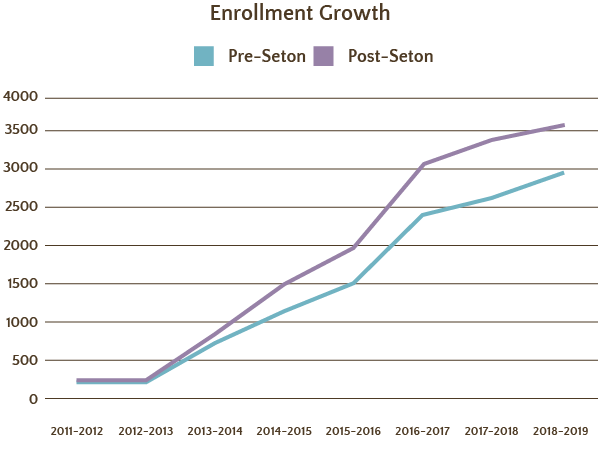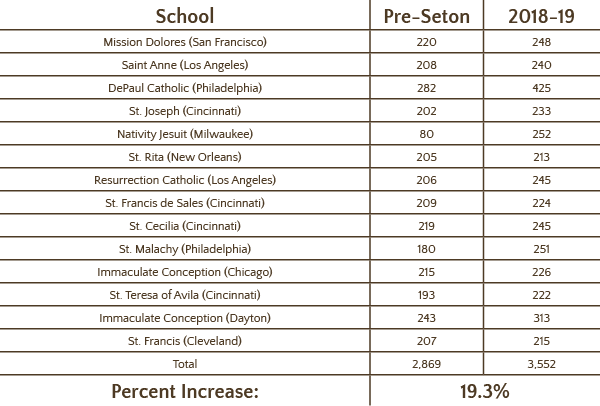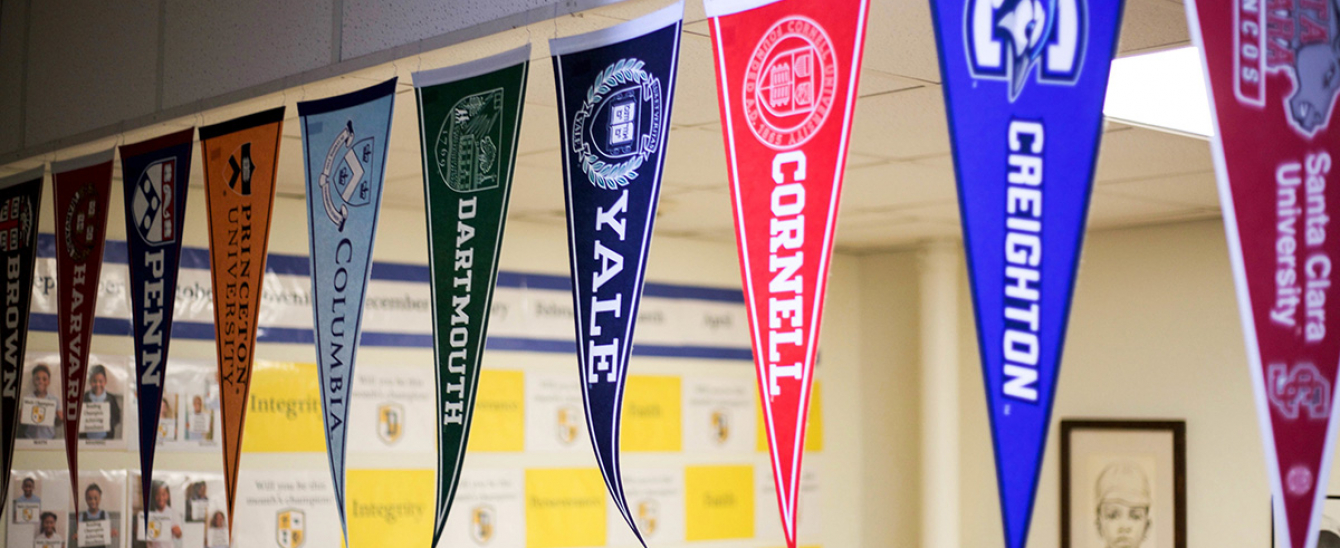
We are committed to transparency and accountability—and we publish our results, setting our Catholic network schools apart from others.
Seton Blended Learning Network: 2018-19 Results
Through our partnerships, we are able to provide our network schools with the know-how and training required to convert to blended learning. We help teachers implement a data-driven model that incorporates the most advanced educational software with specialized small group instruction to create a learning environment that provides personalization for students in core academic subjects. During classes, half of all students receive individualized instruction on computers while the other half engage in data-driven, small-group instruction with their teacher.
Seton works with each school’s leadership team to inject best practices from high-performing urban schools to build a culture where scholars develop the knowledge, skills, and character traits necessary to earn college degrees and pursue lives of value, faith, and integrity. Propelled by these changes and our network’s proven results, our partner schools significantly increased enrollment and reduced per-pupil operating costs this year.
On the nationally normed NWEA MAP assessment, Seton scholars beat the national average of students achieving one or more years of growth by 7 percent in reading and 4 percent in math. Seton also helped ensure that 96 percent of third grade scholars at our Cincinnati blended learning schools met Ohio’s Third Grade Reading Guarantee—a 32 percent increase from the pre-Seton average. View our printable Blended Learning Network 2018-19 results here.
In Seton’s eighth year, students continued to make academic gains network-wide.
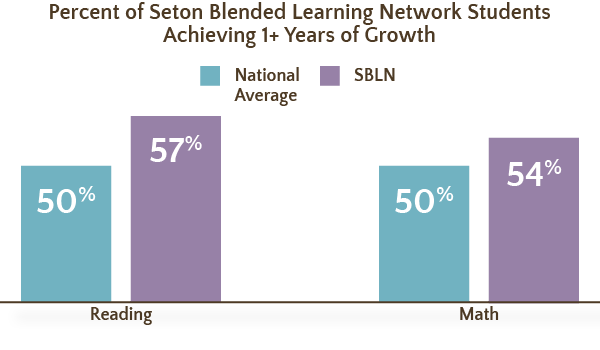
Scholars at Seton partner schools take the nationally normed Northwest Evaluation Association Measures of Academic Progress (NWEA MAP) assessment, which allows schools to compare student growth to grade-level peers. NWEA MAP monitors student growth in the fall, winter, and spring. According to NWEA, only 50% of students meet their individual growth targets. This year, Seton Blended Learning Network scholars outperformed the national average of students achieving one or more years of growth by 7% in reading and 4% in math.
Yes. On NWEA MAP, students should be able to show one year of academic progress. Students in the Seton Blended Learning Network outperform this by growing 1.2 times the national average in reading and 1.1 times in math. This accelerated growth allows scholars below grade level to “catch up” to their grade level peers and pushes scholars at or above grade level to be ready for more rigorous content. In both situations, students are increasing their likeliness to be college and career ready.
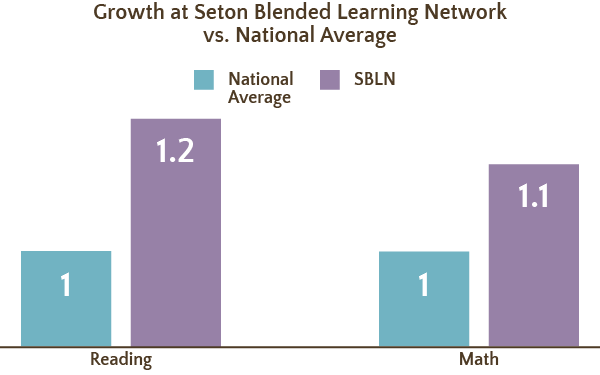
Similarly, most Seton Blended Learning Network classrooms grew faster than other classrooms that started at the same academic level. A grade’s growth percentile helps puts NWEA MAP data into context. This metric measures how a grade level’s growth compares to similar classrooms nationally. As seen below, the vast majority of our classes demonstrated growth in the top third of their respective grades.
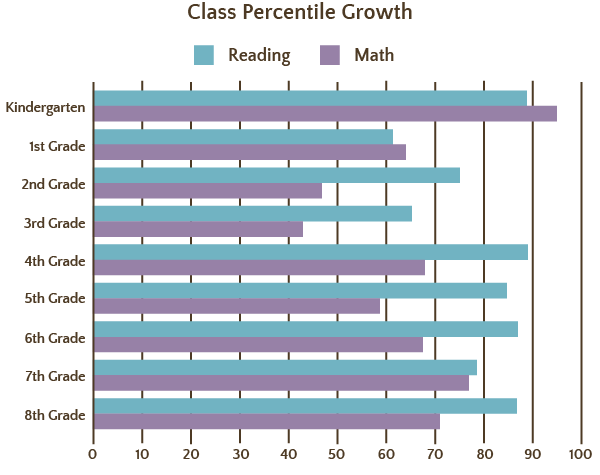
Yes.
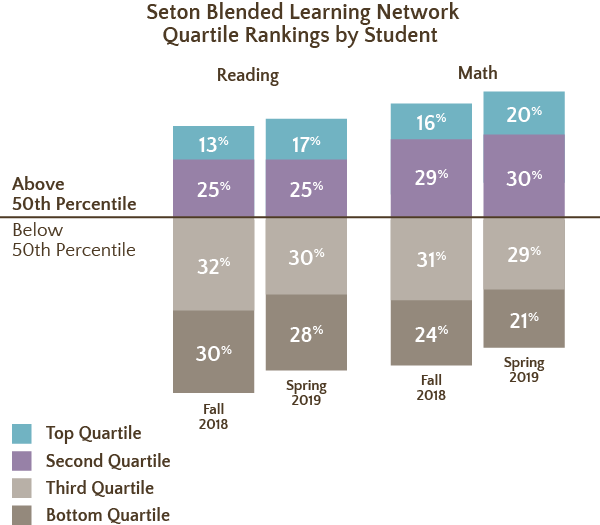
4. Are we setting up our students to be successful in the future?
Yes.
It is crucial that we set up students to be successful in the future. In order to ensure our students leave our schools prepared, we measure third-grade reading proficiency and we track where our eighth graders go on to high school.
Multiple national studies indicate that students who do not read proficiently by third grade are four times more likely to leave high school without a diploma than proficient readers. For children who live in poverty and do not read proficiently by the end of third grade, the proportion of those who do not finish school rises to 26 percent. It is vital that third graders are proficient in reading before moving on to fourth grade. This year, our partner schools were able to move 27 percent more students toward proficiency.
Similarly, it is important that our students attend high quality high schools that can continue to prepare them for college. Studies show that students who attend Catholic high schools are more likely to attend four-year colleges and universities, have high college GPAs, and are more likely to graduate college, compared to similar public school students. Graduates of our partner schools are overwhelmingly accepted to and attend Catholic high schools. We are proud of our students for continuing with a rigorous education and taking significant steps towards college.
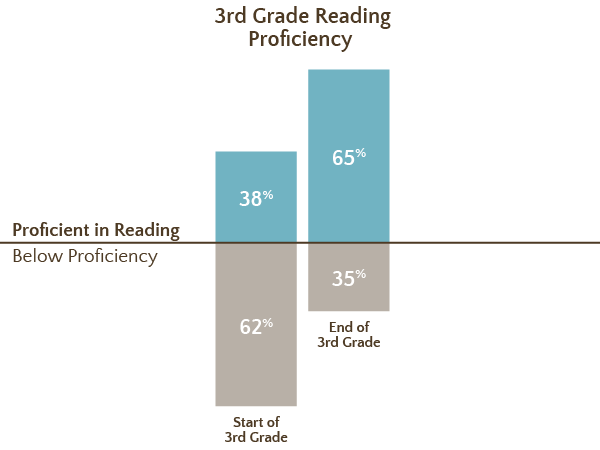
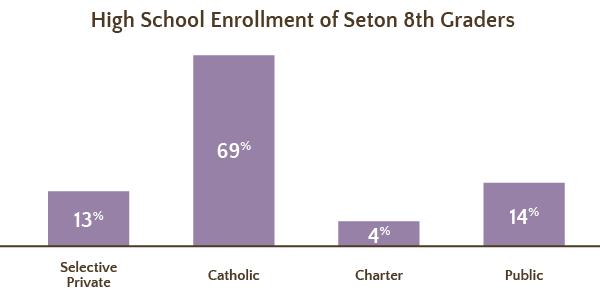
5. Has enrollment improved?
Yes.
Seton Blended Learning Network schools collectively increased enrollment by 19 percent from pre-Seton totals. These schools are not only more financially sustainable, they are providing more low-income students with access to a high quality, faith-based education.
